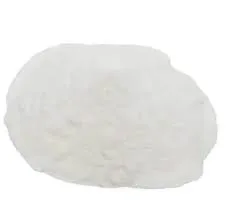
Nov . 26, 2024 04:02 Back to list
Exploring HPMC Applications in Modern Construction Practices and Innovations
The Role of Construction HPMC in Modern Building Practices
In the realm of modern construction, the choice of materials and additives is critical for ensuring structural integrity, durability, and efficiency. One such additive that has gained prominence in recent years is Hydroxypropyl Methylcellulose (HPMC). This versatile cellulose ether plays a vital role in enhancing the performance of various construction materials, particularly in the production of cement, mortar, and plaster mixes. This article explores the characteristics, benefits, and applications of HPMC in construction, emphasizing its significance in achieving high-quality results.
What is HPMC?
Hydroxypropyl Methylcellulose is a non-ionic, water-soluble cellulose ether derived from natural cellulose. It is produced through the chemical modification of cellulose by introducing hydroxypropyl and methyl groups. The resulting compound is a white powder that is odorless and tasteless, making it suitable for use in a variety of applications. In the construction industry, HPMC is primarily used as a thickener, binder, and film-forming agent in mortars and other cementitious materials.
Benefits of HPMC in Construction
1. Improved Workability One of the primary advantages of HPMC is its ability to enhance the workability of cement and mortar mixes. By increasing viscosity and creating a gel-like consistency, HPMC allows for easier application and better manipulation of the materials. This is particularly beneficial in demanding applications, such as tile adhesives and plasters, where a smooth finish is crucial.
2. Water Retention HPMC possesses excellent water-retention properties, which are essential for preventing the premature drying of cement mixes. This characteristic is important because it ensures that the cement has ample time to hydrate properly, leading to stronger and more durable structures. The ability to retain moisture also minimizes the risk of cracking and enhances adhesion.
3. Enhanced Adhesion The addition of HPMC in construction materials improves adhesion to various substrates, including concrete, brick, and gypsum. This property enables better bonding and reduces the risk of delamination and failure of the applied surfaces.
4. Reduced Shrinkage HPMC can help mitigate shrinkage during the curing process by maintaining moisture levels within the mixture. This is particularly important in large pours or when working in arid conditions, where rapid evaporation can lead to significant shrinkage and cracking.
5. Eco-Friendly Given that HPMC is derived from natural cellulose, it is considered an environmentally friendly additive. Its use in construction aligns with the growing emphasis on sustainable building materials and practices.
construction hpmc

Applications of HPMC in Construction
HPMC finds widespread application across various construction domains. Some common uses include
- Tile Adhesives In tile installation, HPMC increases the open time of adhesives, allowing for better positioning and adjustments. It also enhances the bond strength between tiles and substrates.
- Render and Plaster For rendering and plastering applications, HPMC improves the workability and finishing characteristics while ensuring good adhesion and reduced water loss.
- Self-Leveling Compounds HPMC is often used in self-leveling underlayments, where it helps maintain consistency and flow, ensuring a smooth and level surface.
- Cement-Based Grouts In grouting mixtures, HPMC enhances fluidity and adhesion, making it easier to fill gaps and create a seamless finish.
- Repair Mortars HPMC contributes to the performance of repair mortars, providing the necessary workability and water retention for repairing damaged structures.
Conclusion
As the construction industry continues to evolve, the need for high-performance materials that are easy to work with and environmentally friendly becomes increasingly evident. Hydroxypropyl Methylcellulose stands out as a significant additive that addresses these needs. Its unique properties not only enhance the quality and durability of construction materials but also contribute to more sustainable building practices. The integration of HPMC into modern construction processes reflects a broader trend towards innovation and efficiency in building practices. As the industry progresses, the demand for such versatile and effective materials will undoubtedly continue to grow, solidifying HPMC's place as a crucial component in the future of construction.
-
Premium Cellosize HEC: Hydroxyethyl Cellulose for Sale
NewsSep.01,2025
-
Premium Cellulose Ether: Effective Liquid Thickener & Stabilizer
NewsAug.31,2025
-
HPMC for Tile Adhesive: Superior Bonding & Workability
NewsAug.30,2025
-
Premium Cellulose Ether: Effective Liquid Thickener Solutions
NewsAug.29,2025
-
HPMC for Tile Adhesive: Enhanced Bonding & Workability
NewsAug.28,2025
-
tile-bonding-additives-for-stronger-bonds
NewsAug.22,2025







